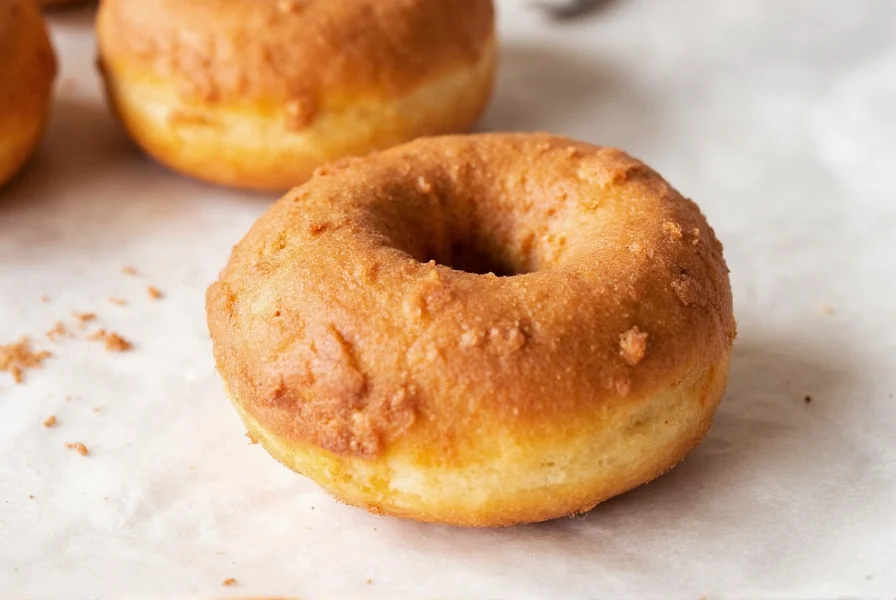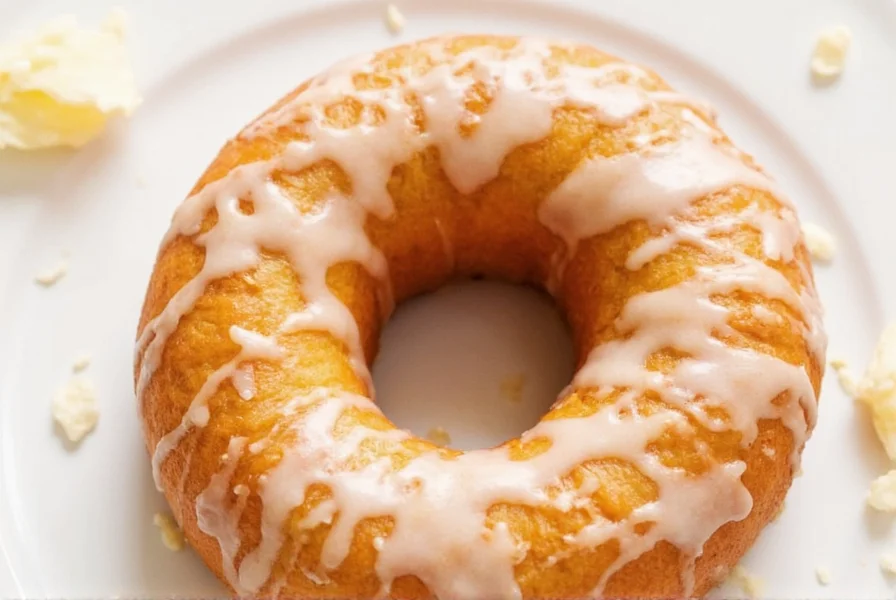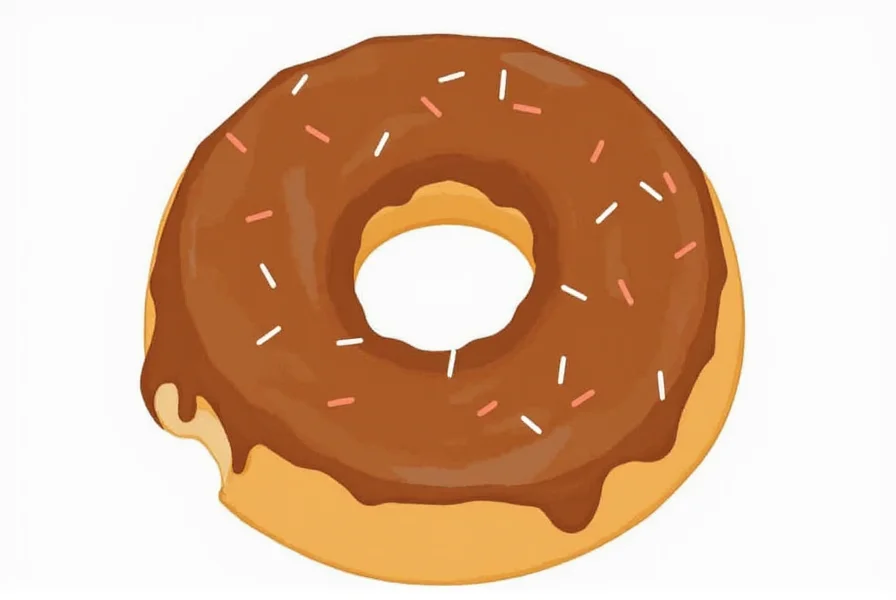For pastry enthusiasts seeking the perfect fusion of two classic breakfast favorites, cinnamon roll donuts deliver an irresistible combination of textures and flavors. This innovative dessert has gained significant popularity in recent years, appearing on menus at specialty bakeries and coffee shops across North America. Understanding what makes these treats special requires examining both their composition and preparation methods.
What Exactly Is a Cinnamon Roll Donut?
Unlike traditional cinnamon rolls that come in individual spiral shapes or rectangular slices, cinnamon roll donuts maintain the distinctive circular form of a donut while incorporating the signature cinnamon-sugar filling throughout the dough. The preparation process typically involves:
- Creating a yeast-based or cake-style donut batter
- Rolling out the dough and spreading a cinnamon-sugar-butter mixture
- Coiling the dough into a spiral pattern
- Cutting into individual donut shapes using a specialized cutter
- Frying or baking, then applying a sweet glaze
This method preserves the layered, swirled appearance of cinnamon rolls while achieving the convenient handheld format of donuts. The result is a pastry with multiple texture contrasts—crisp exterior, soft interior, and ribbon-like cinnamon filling that creates pockets of intense flavor.
Historical Development of the Hybrid Pastry
While cinnamon rolls have European origins dating back to the 1920s in Sweden, and donuts have much older roots, the cinnamon roll donut represents a distinctly modern American innovation. Food historians trace its emergence to the early 2010s when specialty donut shops began experimenting with fusion pastries.
The trend accelerated when national chains recognized consumer demand for novelty items that combined familiar flavors in new formats. Unlike traditional donut fillings that are injected after cooking, cinnamon roll donuts incorporate the cinnamon swirl directly into the dough structure, creating a more integrated flavor experience that distinguishes them from simple cinnamon-flavored donuts.
Cinnamon Roll Donut vs Traditional Variations
Understanding the differences between these pastries helps appreciate what makes cinnamon roll donuts unique:
| Feature | Cinnamon Roll Donut | Traditional Cinnamon Roll | Regular Donut |
|---|---|---|---|
| Shape | Circular with hole, spiral filling visible | Spiral coil, no hole | Circular with hole |
| Texture | Combines cakey donut exterior with soft roll interior | Uniformly soft throughout | Consistent texture (cake or yeast) |
| Portability | Highly portable, less messy | Requires plate, often messy | Highly portable |
| Preparation | Dough rolled, filled, coiled, cut into donut shape | Dough rolled, filled, coiled, sliced | Shaped directly into rings |
Creating Perfect Cinnamon Roll Donuts at Home
While many bakeries now offer cinnamon roll donuts, making them at home allows for customization and freshness. The following method produces authentic results with proper texture contrast:
Essential Ingredients
- Yeast donut dough (or cake donut batter for simpler preparation)
- Unsalted butter, softened
- Granulated sugar and brown sugar
- Ground cinnamon (preferably Ceylon for delicate flavor)
- Freshly squeezed orange zest (optional but recommended)
- Cream cheese or vanilla glaze components
Step-by-Step Preparation
- Prepare your donut dough according to recipe specifications
- Roll dough to approximately 1/4-inch thickness on a lightly floured surface
- Spread softened butter evenly across the dough surface
- Mix sugar, cinnamon, and orange zest, then sprinkle evenly over buttered dough
- Carefully roll dough into a tight log, pinching seam to seal
- Cut log into 1-inch slices using dental floss for clean cuts
- Place slices on parchment-lined baking sheet with cut side down
- Cover and allow to rise until nearly doubled (about 45-60 minutes)
- Bake at 350°F (175°C) for 12-15 minutes until golden
- Cool slightly before applying glaze
For those seeking how to make cinnamon roll donuts at home with minimal equipment, consider using a cake donut batter as your base, which requires less rising time than yeast dough. The cinnamon roll donut recipe easy approach substitutes yeast dough with cake batter, rolled thin, filled, and shaped into donut forms before baking.
Popular Variations and Customization Options
Home bakers and professional pastry chefs have developed numerous creative twists on the classic cinnamon roll donut recipe. Some popular variations include:
- Bacon-infused: Adding crumbled cooked bacon to the cinnamon-sugar mixture
- Cheesecake swirl: Incorporating small dollops of cheesecake filling within the spiral
- Apple cinnamon: Adding finely diced apples to the filling layer
- Maple glaze: Substituting traditional cream cheese glaze with maple syrup-based icing
- Vegan version: Using plant-based butter and egg substitutes for dairy-free preparation
When experimenting with cinnamon roll donut baking tips, remember that the filling-to-dough ratio significantly impacts the final product. Too much filling can cause leakage during baking, while too little diminishes the signature cinnamon roll experience. The ideal ratio maintains approximately 1:4 filling to dough by volume.
Nutritional Considerations
While undeniably indulgent, understanding cinnamon roll donut nutrition facts helps enthusiasts make informed choices. A standard cinnamon roll donut (approximately 3.5 ounces) typically contains:
- 350-450 calories
- 15-20g fat (including 6-8g saturated fat)
- 50-60g carbohydrates
- 25-35g sugars
- 3-5g protein
For those seeking a lighter option, consider baking rather than frying, reducing sugar content by 25%, and using whole wheat pastry flour for added fiber. These modifications create a more balanced treat while preserving the essential cinnamon roll donut characteristics.
Finding Quality Cinnamon Roll Donuts
When searching where to buy cinnamon roll donuts near me, look for bakeries that prepare them fresh daily with visible swirl patterns. Quality establishments won't serve products where the cinnamon filling has bled into the dough, indicating improper preparation or extended holding times.
Specialty coffee shops often partner with local bakeries to offer these hybrid pastries, particularly during fall and winter seasons when cinnamon flavors are most popular. Some regional chains have made cinnamon roll donuts a permanent menu item due to consistent customer demand.

Perfect Pairings and Serving Suggestions
Cinnamon roll donuts pair exceptionally well with certain beverages and accompaniments that enhance their flavor profile:
- Coffee: Medium roast with chocolate notes balances the sweetness
- Tea: Earl Grey or chai complements the cinnamon spice
- Milk: Cold whole milk provides refreshing contrast
- Breakfast combinations: Serve alongside scrambled eggs for a balanced morning meal
For optimal enjoyment, consume cinnamon roll donuts within 24 hours of preparation. If storing longer, keep in an airtight container at room temperature for up to 48 hours, or freeze for longer storage. Always reheat gently before serving to restore texture.

Common Questions About Cinnamon Roll Donuts
What makes a cinnamon roll donut different from a regular cinnamon donut?
A cinnamon roll donut features an integrated spiral of cinnamon-sugar filling throughout the dough structure, similar to traditional cinnamon rolls. Regular cinnamon donuts typically have cinnamon flavoring mixed into the batter or sprinkled on top after cooking, without the distinctive layered swirl pattern that defines cinnamon roll donuts.
Can I make cinnamon roll donuts without a special cutter?
Yes, you can create cinnamon roll donuts without specialized equipment. After rolling and filling the dough, shape it into a log, slice into 1-inch pieces, then use your thumb to gently press a hole through the center of each piece while maintaining the spiral pattern. Alternatively, arrange the slices on a baking sheet and they'll naturally form a donut shape as they rise and bake.
How do I prevent the filling from leaking out during baking?
To prevent filling leakage, ensure your dough is properly chilled before cutting (about 15 minutes in the refrigerator), use the correct filling-to-dough ratio (approximately 1:4), and avoid overfilling. Additionally, when rolling the dough log, press gently to seal the filling without compressing the dough too much, which helps maintain structural integrity during baking.
What's the best way to store cinnamon roll donuts?
Store cinnamon roll donuts in an airtight container at room temperature for up to 48 hours. For longer storage, freeze them unglazed on a baking sheet, then transfer to freezer bags. Thaw at room temperature and apply fresh glaze before serving. Avoid refrigeration, as it accelerates staling and affects texture negatively.
Are there gluten-free options for cinnamon roll donuts?
Yes, gluten-free cinnamon roll donuts can be made using quality gluten-free flour blends designed for yeast baking. Look for blends containing xanthan gum or add 1 teaspoon per cup of flour. The texture will differ slightly from traditional versions but can still deliver the signature cinnamon swirl experience when prepared correctly with proper hydration levels.











 浙公网安备
33010002000092号
浙公网安备
33010002000092号 浙B2-20120091-4
浙B2-20120091-4